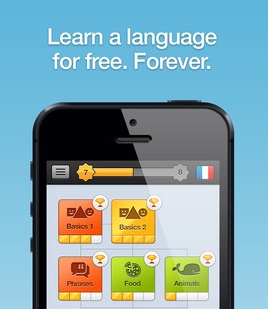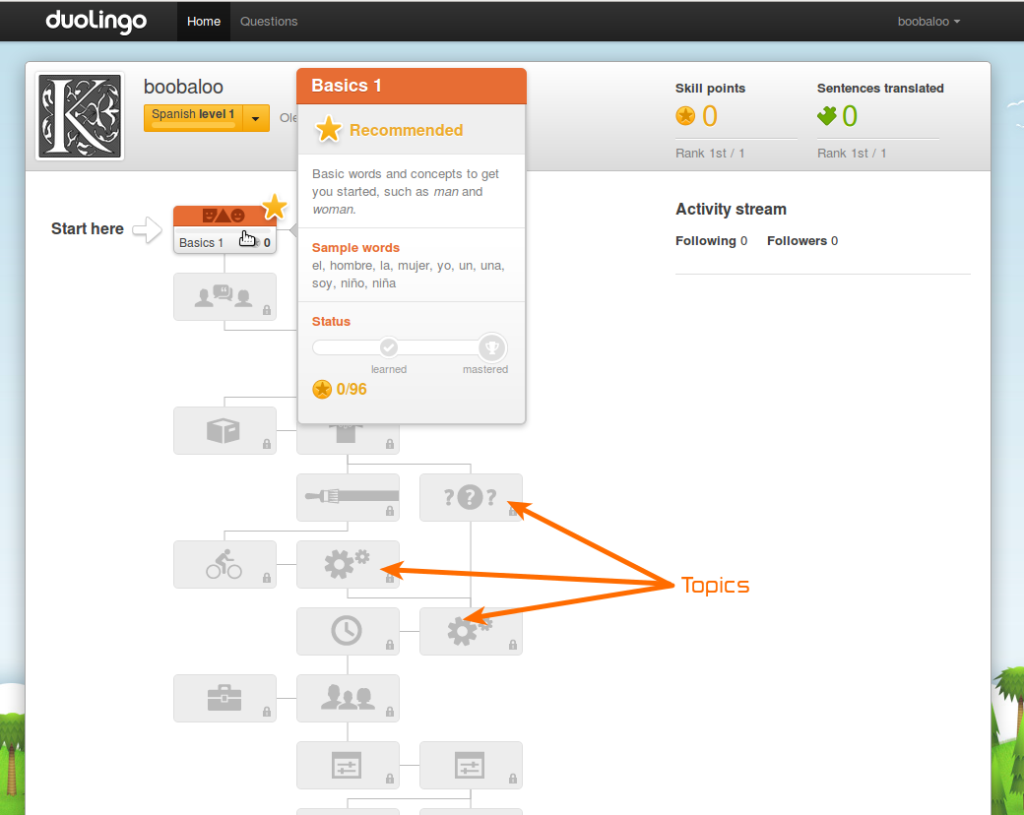Duolingo is a free cross-platform app for learning languages
Duolingo is a new learning tool that uses gamification to teach and reinforce language learning. Say that you’re a beginning learner and want to build your vocabulary and translation skills. Log into duolingo.com, sign up and begin learning Spanish, French, Portuguese, German or Italian.
The website has a desktop version that works on both the Mac and Windows platforms. You can also go mobile and run the learning program on either iPhone or Android devices. And the best part? It’s all completely free.
Duolingo cleverly incorporates gamification by awarding points for completing vocabulary exercises and keeping track of the learner’s progress through line scales and level badges along the way. Log in each day for new sessions to view previous progress, your current level and to do optional review practice.
As you move up in your language levels, you navigate down a “skills tree” that keeps track of your correct number of responses to a variety of language drills. You can precede each level by working through a lesson that reinforces some aspect of vocabulary or grammar. You earn points for completing the lesson, or you bypass a lesson to proceed to a higher skill, depending on how advanced you are.
Individual practice/skill testing sessions employ several teaching methods along with gamification that include:
- Hearing the foreign language and transcribing it verbatim. Use the “turtle” icon to slow down the pronunciation. (Press the “check” button for instant feedback. Pass your cursor over a vocabulary word for a translation to refresh your memory.)
- Hearing the foreign language word, phrase or sentence and translating it into English.
- Hearing the foreign language and choosing from three possible multiple-choice English translations.
- Translating the English into the foreign language.
You work through a random combination of the above, and your goal is to get 15 questions correct. Any incorrect answer results in your forfeiture of one of the three (or four for beginning levels) red hearts in your quiz window. If you lose all your red hearts and miss one more, you must begin again. (You don’t loose hearts for minor typos or for leaving out an accent or special character, but you do get somewhat chastised when you overlook those details.)

Duolingo also incorporates the social experience into a language learning community. Find friends on Facebook and compete in translation skills exercises and learn together. Navigate through the site for language immersion and chat room language topic discussions.
So Duolingo combines both gamification and programed learning into a robust process of repetition and learning something new. As the learner progresses deeper into the skill tree, new and increasingly richer learning experiences become available.
Finally, there’s more to Duolingo than just teaching language skills for free. The site owners’ explanation of how their site earns its revenue:
“Somebody who needs a webpage translated uploads it to Duolingo. That document then gets presented to Duolingo students who can translate it in order to practice the language they are learning. When the document is fully translated, Duolingo returns it to the original content owner who, depending on the type of document they uploaded, pays for the translation.”
Have any of you found success with this learning tool? Check out Duolingo to try it for yourself for free.










Just downloaded it! Love it so far!
I’m really impressed with it (beginner Spanish). Addictive and efficient, easy to make one’s lessons easier or harder as the mood strikes.
Awesome! When I read the first part of this article I asked myself how someone could create such a beautiful platform without anyone paying for it. Very smart solution!
I like how they designed the shema
Their business model is almost devilishly clever. They make money through crowd-sourced web page translations. The “crowd” consists of both basic and advanced language students/speakers. When you get up to about level 4, you get to “practice” on language translation projects they consistently run.
Which gamification provider did Duolingo work with? Is it their own?